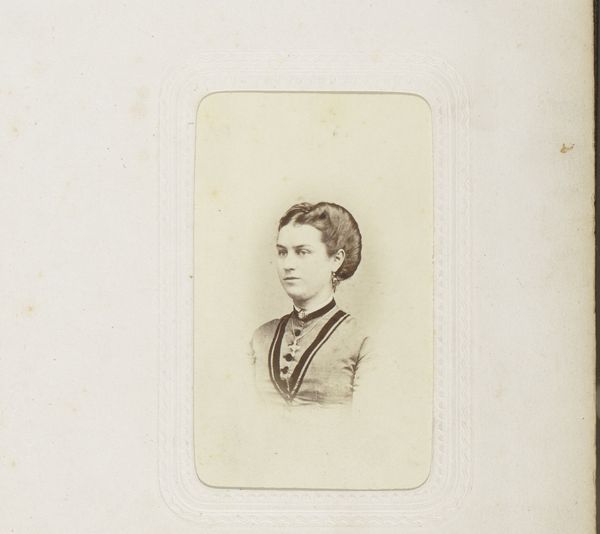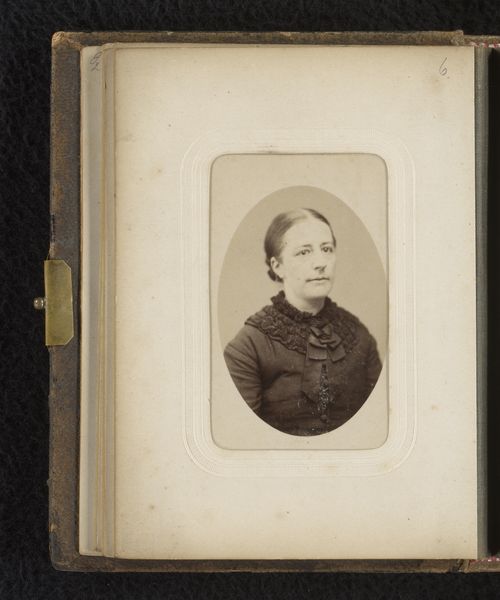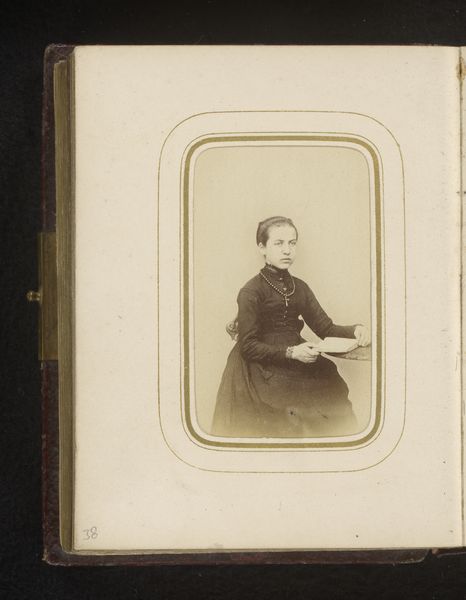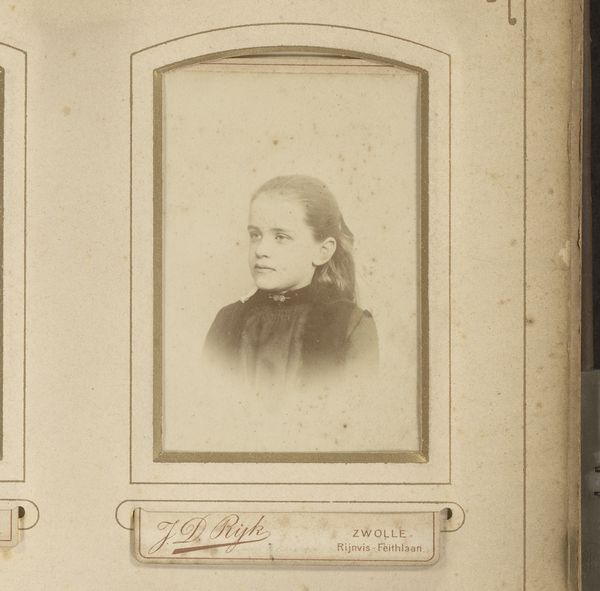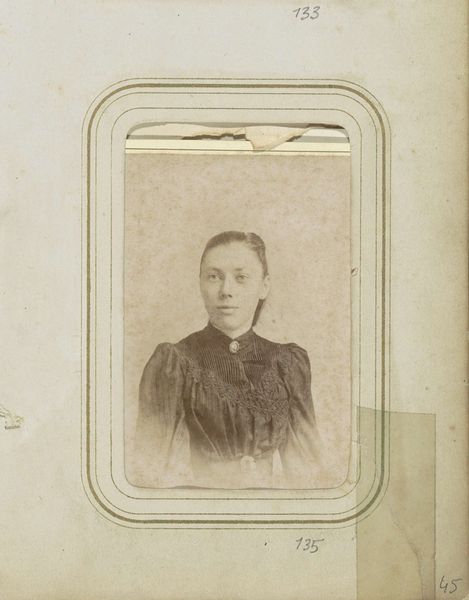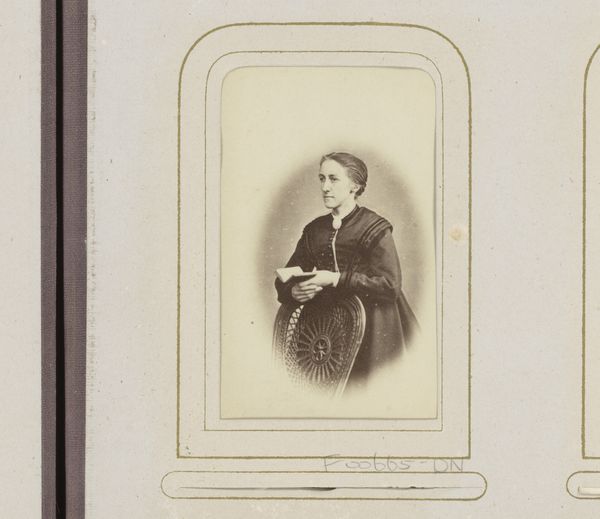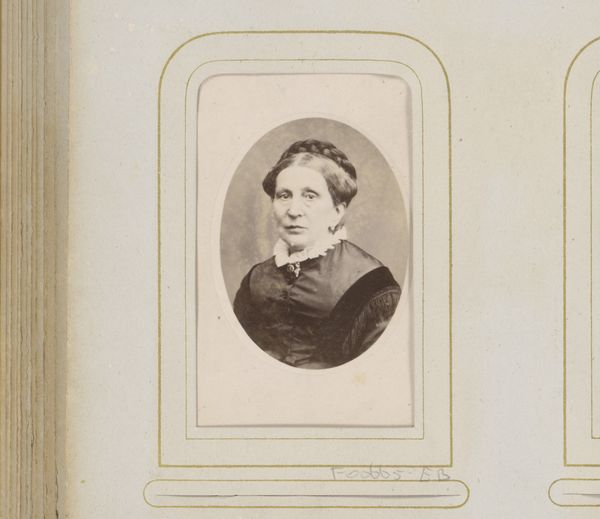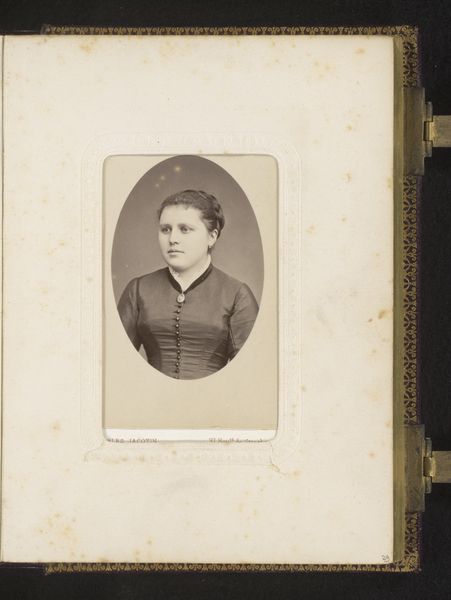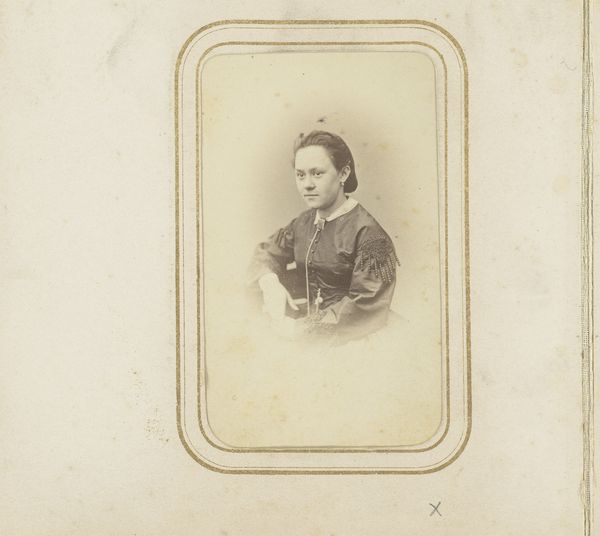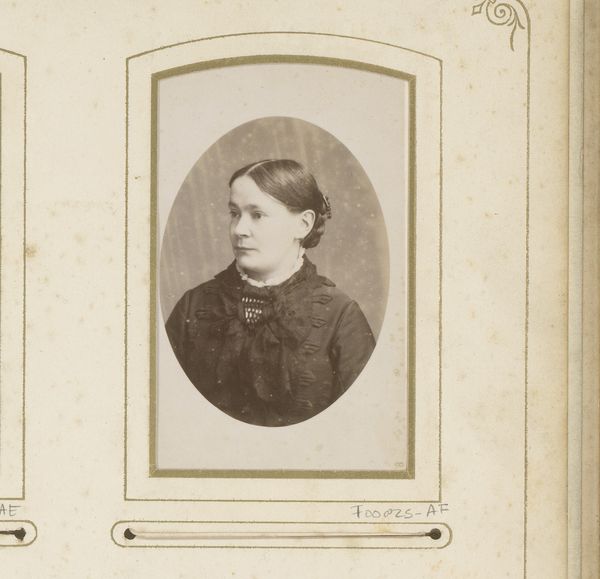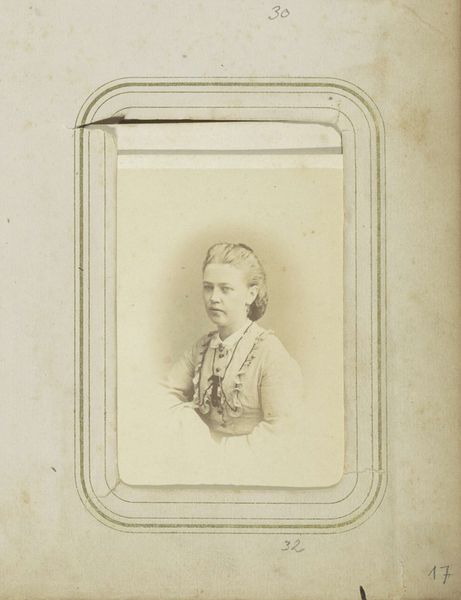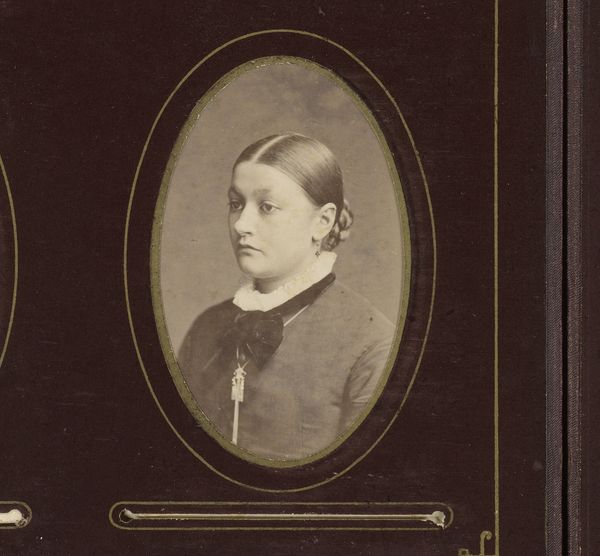
photography, gelatin-silver-print
#
portrait
#
pictorialism
#
impressionism
#
photography
#
historical fashion
#
gelatin-silver-print
#
realism
Dimensions: height 88 mm, width 61 mm, height 105 mm, width 65 mm
Copyright: Rijks Museum: Open Domain
Curator: A fascinating portrait. "Portret van een vrouw met een opgestoken vlecht," or "Portrait of a Woman with an Updo" by Albert Greiner, sometime between 1874 and 1887, captured as a gelatin silver print. The Rijksmuseum holds it now. Editor: It’s remarkably stark, isn’t it? Almost severe. The subdued tones of the print certainly amplify that impression. What’s your read on the gelatin silver process influencing our perception here? Curator: Hugely impactful. The mechanization of photography by this era democratized portraiture, yes, but the silver gelatin process created incredible tonal range and detail that we can analyze now. Look at the way the light reflects off her jacket, defining the very specific textile, likely manufactured in a mill… Editor: Speaking of manufacturing, the rise of the middle class and this era’s particular social constraints surrounding gender—were those playing out here, you think? The lack of ostentation is rather pointed, it seems. Curator: Exactly! This feels like a very conscious statement, placing value on a kind of quiet dignity, certainly for the sitter, but think too about Greiner and his studio; who was he courting as clients? The rising merchant class? Or attempting to present his studio a specific way? Editor: It definitely shifts my thinking. The photograph is not simply a straightforward recording. Instead it feels more like constructing and reinforcing a social value in this very moment through image-making and circulating specific ideologies of womanhood and labor. Curator: And it speaks volumes about who was able to *participate* in this visual culture! Photography may have been democratizing representation, but portraiture like this was far from universally accessible, materially and socially. Editor: It's a sobering reminder of the gatekeeping around representation that even supposedly revolutionary mediums couldn't completely erase. I hadn’t considered the labor or textiles much before but analyzing it in this way creates so many access points to understanding it in its social era. Curator: Absolutely. It changes how one considers the artwork, especially through an ethical, class-conscious lens.
Comments
No comments
Be the first to comment and join the conversation on the ultimate creative platform.
